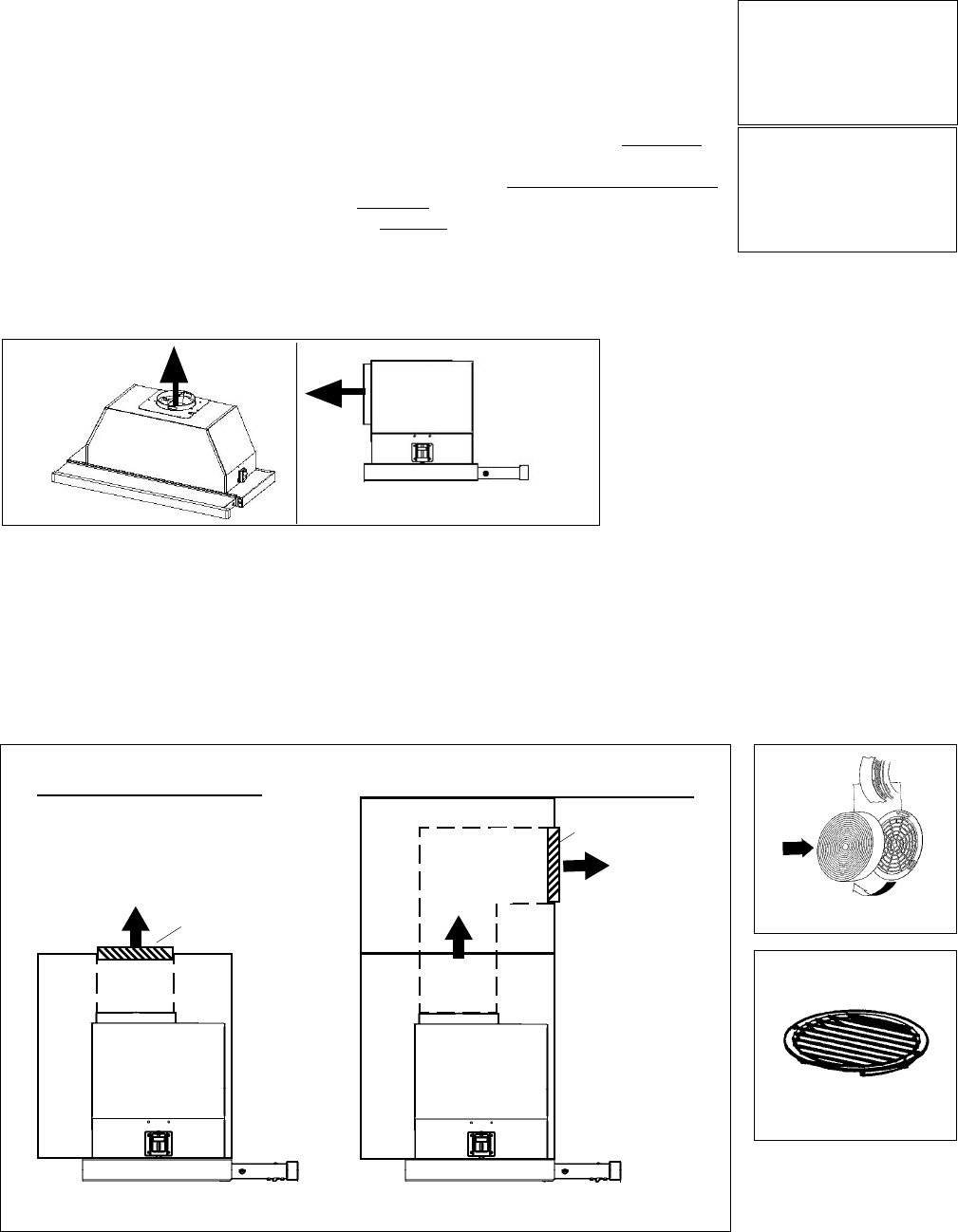
Version 10/05 - Page 5
9.0 feet
10.0 feet
0.0 feet
19.0 feet
TOOLS NEEDED FOR INSTALLATION
• Saber Saw or Jig Saw
• Drill
• 1 1/4" Wood Drill Bit
• Pliers
• Phillips Screwdriver
• Wire Stripper or Utility Knife
• Metal Snips
• Measuring Tape or Ruler
• Level
• Pencil
• Caulking Gun
• Duct Tape
PARTS SUPPLIED FOR INSTALLATION
• 1 Backdraft Damper
• 1 Vent Grate (for recirculating installations only)
• 3 front trims, white (already installed), black,
and brushed aluminum
• 1 Vinyl Trim
• 1 Literature Package
PARTS NEEDED FOR INSTALLATION
• 2 Conduit Connectors
• Power Supply Cable
• 1 Wall or Roof Cap
• All Metal Ductwork
OPTIONAL ACCESSORIES AVAILABLE
• Charcoal Filters
For non-vented installations only,
replace charcoal filters as needed
part # 6093034
PLAN THE DUCTWORK
The Cristal HC slideout rangehood is designed to offer wide flexibility of installations.
The rangehood can be ducted vertically or horizontally through a 6" round vent.
The unit can also be installed in a recirculating configuration. The unit comes
standard in the top venting position. FIGURES 1 and 2 show vertical and horizontal
installations for this unit. FIGURE 3 shows recirculating installation.
The Cristal HC requires 6" round ductwork. To ensure that the blower performs
to its highest possible capacity, ductwork should be as short and straight as
possilbe.
RECIRCULATING INSTALLATIONS
For recirculating installations (FIGURE 3), Charcoal Filters are necessary. Remove all four grease filters and set aside. Attach
one charcoal filter to each end of the blower. Each charcoal filter attaches to the black grid on the side of the blower. Rotate
the filter clockwise to install and counterclockwise to remove (FIGURE 3A). Replace all four grease filters. Some ductwork
must be installed to exhaust the rangehood back into the kitchen, either at the top of the cabinet or at the face of the soffit. A
plastic vent grate (FIGURE 3B) supplied with the rangehood can be used to cover the duct opening. This duct work must not
terminate into a dead air space.
FIGURE 3A
45˚ Elbow
90˚ Elbow
90˚ Flat Elbow
Wall Cap
FIGURE A
9 Feet Straight Duct
2 - 90˚ Elbows
Wall Cap
Total System
FIGURE B
3.0 feet
5.0 feet
12.0 feet
0.0 feet
VERTICAL
DUCTING
FIGURE 2
HORIZONTAL
DUCTING
FIGURE 1
For direct rear venting (FIGURE 2), you must
change the blower position. Remove the 12
screws that hold the metal housing to the
rangehood body. Remove the 4 screws that
hold the blower housing to the metal housing.
Rotate the blower 90 degrees toward the back
and then flip it over 180 degrees. Be sure that
the power supply cable is properly positioned.
Replace all screws, making sure that they are
firmly fastened.
cabinet
ceiling
6” round
duct
hood
cabinet
ceiling
6” round
duct
hood
soffit
vent grate
vent grate
FIGURE 3B
FIGURE 3
The ductrun should not exceed 35 feet if ducted with
the required minimum of 6" round duct. Calculate
the length of the ductwork by adding the equiva-
lent feet in FIGURE A for each piece of duct in
the system An example is given in FIGURE B.
For best results, use no more than three 90°
elbows. Make sure that there is a minimum of
24" of straight duct between elbows if more
than one is used. Do not install two elbows
together. If you must elbow right away, do it
as far away from the hood's exhaust opening
as possible.














